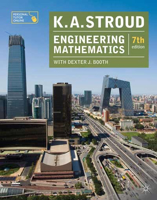Author: John Bird
Published: March 2021
Now in its eighth edition, Bird’s Basic Engineering Mathematics has helped thousands of students to succeed in their exams. Mathematical theories are explained in a straightforward manner, supported by practical engineering examples and applications to ensure that readers can relate theory to practice. Some 1,000 engineering situations/problems have been ‘flagged-up’ to help demonstrate that engineering cannot be fully understood without a good knowledge of mathematics.
The extensive and thorough coverage makes this a great text for introductory level engineering courses – such as for aeronautical, construction, electrical, electronic, mechanical, manufacturing engineering and vehicle technology – including for BTEC First, National and Diploma syllabuses, City & Guilds Technician Certificate and Diploma syllabuses, and even for GCSE revision.
Its companion website provides extra materials for students and lecturers, including full solutions for all 1,700 further questions, lists of essential formulae, multiple choice tests, and illustrations, as well as full solutions to revision tests for course instructors.
Table of Contents
1. Basic arithmetic
2. Fractions
3. Decimals
4. Using a calculator
5. Percentages
6. Ratio and proportion
7. Powers, roots and laws of indices
8. Units, prefixes and engineering notation
9. Basic algebra
10. Further algebra
11. Solving simple equations
12. Transposing formulae
13. Solving simultaneous equations
14. Solving quadratic equations
15. Logarithms
16. Exponential functions
17. Straight line graphs
18. Graphs reducing non-linear laws to linear form
19. Graphical solution of equations
20. Graphs with logarithmic scales
21. Angles and triangles
22. Introduction to trigonometry
23. Trigonometric waveforms
24. Non-right angled triangles and some practical applications
25. Cartesian and polar co-ordinates
26. Areas of common shapes
27. The circle and its properties
28. Volumes and surface areas of common solids
29. Irregular areas and volumes and mean values
30. Vectors
31. Methods of adding alternating waveforms
32. Presentation of statistical data
33. Mean, median, mode and standard deviation
34. Probability
35. Introduction to differentiation
36. Standard integration
37. Number sequences
38. Binary, octal and hexadecimal
List of formulae
Answers to Practice Exercises






































